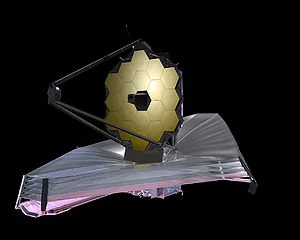Introduction
 A Perplexing property of quantum mechanics could be allowing birds to see and navigate the planet’s magnetic fields. One -fifth of Earth’s 10,000 birds species migrate over great distances, crossing seemingly insurmountable obstacles as they follow the seasons.Demoiselle Cranes fly to altitudes in excess of 20,000 feet as they pass over the Himalayan Mountains . The Arctic Tern travels from pole to pole in pursuit of an endless summer, a distance of some 40,000 miles.
A Perplexing property of quantum mechanics could be allowing birds to see and navigate the planet’s magnetic fields. One -fifth of Earth’s 10,000 birds species migrate over great distances, crossing seemingly insurmountable obstacles as they follow the seasons.Demoiselle Cranes fly to altitudes in excess of 20,000 feet as they pass over the Himalayan Mountains . The Arctic Tern travels from pole to pole in pursuit of an endless summer, a distance of some 40,000 miles.
Scientists have long speculated that certain animals are making use of magnetic fields to find their way, but biologists are mystified as to how they might do it. Now some answers might be coming from one of the most perplexing interactions in Physics.
Radical, Spins and Coherence

Despite decades of study, the physics basis of the robin magnetic sense remains elusive. The two main models for Robin magnetoreception are a magnetite-based model and a radical-pair-based model. The former suggests that the compass has its foundation in small particles of magnetite located in the head of the bird. The latter idea is that Robin compass may be produced in a chemical reaction in the eye of bird, involving the production of a radical pair. A radical pair, most generally, is a pair of molecules, each of which have an unpaired electron. If the radical pair is formed so that the spins on the two unpaired electrons in the system are entangled, (i.e. they begin in a singlet or triplet state) and the reaction products are spin- dependent(i.e., there are distinct products for the cases where the radical pair system is in an overall singlet vs. triplet state), then there is an opportunity for an external magnetic field to affect the reaction by modulating the relative orientation of the electron spins.
Robin Magneto reception

First, light – induced electron transfer from one radical-pair- forming molecule to an acceptor molecule creates a radical pair.
Second, the singlet (S) and triplet (T) electron-spin states interconvert owing to the external (Zeeman) and internal (hyperfine) magnetic couplings.
Third, singlet and triplet radical pairs recombine into singlet and triplet products , respectively, which are biologically detectable.

Cryptochromes are photoreceptors that regulate entrainment by light of the circadian clock in plants and animals. They also act as integral parts of the central circadian oscillator in animal brains and as receptors controlling photomorphogenesis in response to blue or ultraviolet(UV-A) light in plants. Cryptochrome s are probably the evolutionary descendent of DNA photolyases, which are light- activated DNA-repair enzymes , and are classified into three groups – plant cryptochromes, animal cryptochromes, and CRY-DASH proteins. Cryptochromes and photolyases have similar three-dimensional structures, characterized by an alpha/beta domain and a helical domain. The structure also includes a chromophore, flavin adenine dinucleotide . The FDA- access cavity of the helical domain is the catalytic site of photolyases, and it is predicated also to be important in the mechanism of cryptochromes.
Entanglement
Quantum entanglement dictates that if two electrons are created at the same time, the pair will be “ entangled” so that whatever happens to one particle affects the other otherwise, it would violate fundamental laws of physics. The two particles remain entangled even when separated by vast distances . So if one particle is spin-up, the other must be spin-down, but what’s mind-boggling is that neither will have a spin until they’re measured . That means that not only willyou not know what the spin of the electron is until you measure it, but that the actual act of measuring the spinwill make it spin-up or spin-down. As difficult as entangled is to believe, as well as understand, it is a well established property of quantum mechanics. And some physicists are suggesting that birds and other animals might be using the effect to see and navigate Earth’s magnetic fields . The process could work via light- triggered interactions on a chemical on birds eyes.
Summary

SUBMITTED BY:
Priyalatha .M.
Ramyashri.
Preethi.
Sahana rao L.N.
1st M.Sc.(1st Semester)
REFERENCE:
Internet
Journals
The incoming light would excite two electrons on a molecule in the birds eye, switching one onto a second molecule , but the two would remain entangled even though they are separated. The Earth’s magnetic field would alter the alignment of the electron’s spin and in the process alter the chemical properties of the molecules. Physicists suspect that the reactions would leave varying concentrations of chemicals throughout the eye, possibly creating a picture of our planet’s magnetic field that would allow birds to orient themselves and sense the proper directions; thereby helping them to migrate.
Biophysicists already have their eyes on a few chemicals that might enable the birds to detect entanglement. One such chemical is called cryptochrome. It’s thought that correlated pairs form in cryptochrome in the presence of blue light.
A Group of Physicists from the University of Oxford have proposed that entanglement could last in a bird’s retina for 100 micro seconds , whereas physicists have only been able to make the interaction last for 80 microseconds.

SUBMITTED BY:
Priyalatha .M.
Ramyashri.
Preethi.
Sahana rao L.N.
1st M.Sc.(1st Semester)
REFERENCE:
Internet
Journals





















